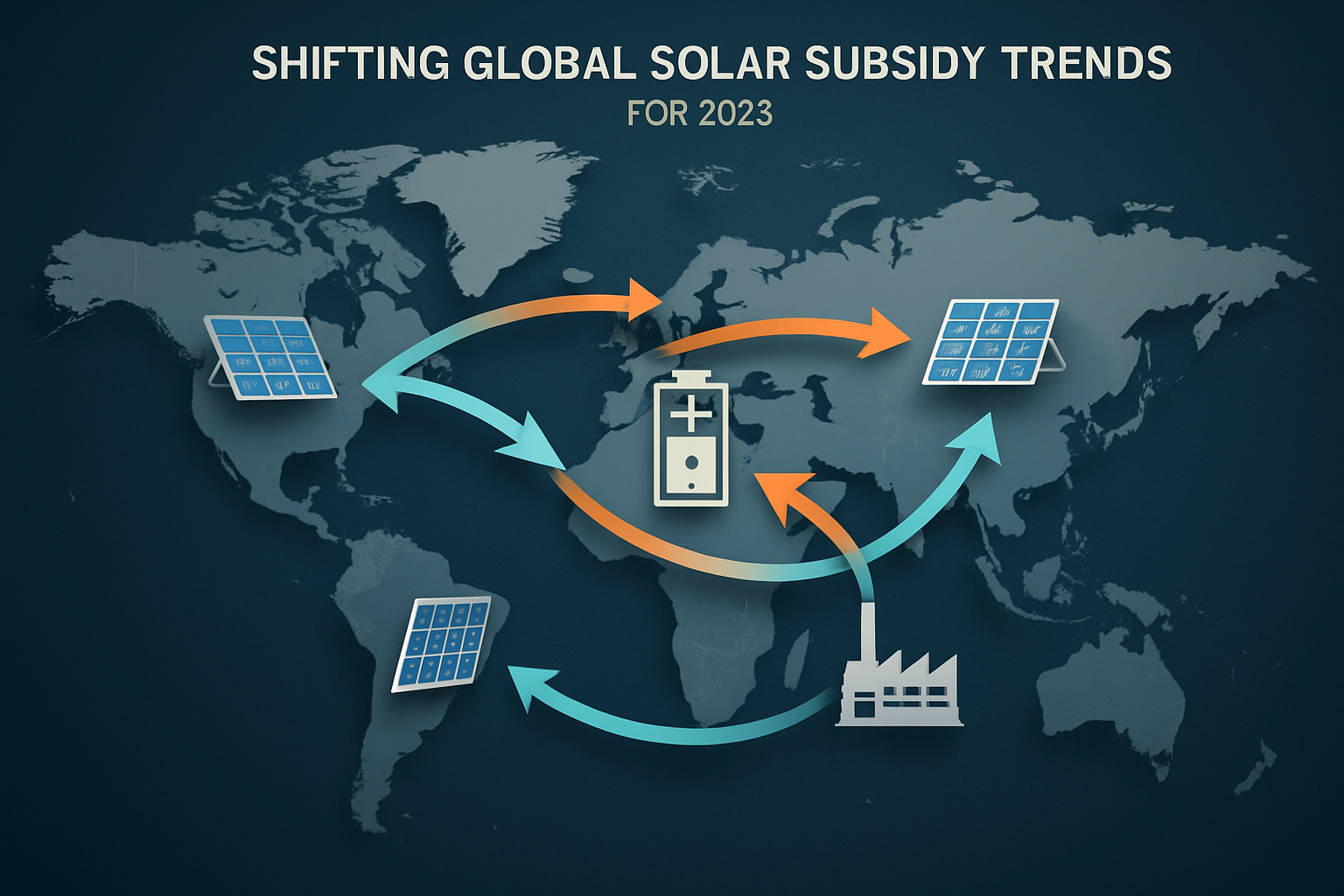Solar energy offers a transformative path for cooperatives, enabling them to deliver clean, reliable power to their members. As these community-focused organizations consider solar adoption, a pivotal decision arises: should they prioritize upfront solar grants or rely on long-term solar tariffs? Each approach presents distinct advantages and considerations for solar energy cooperatives seeking to enhance energy independence and provide value to their communities.

Understanding Upfront Solar Grants for Cooperatives
Upfront solar grants provide direct financial assistance, significantly reducing the initial capital outlay required for solar projects. This funding mechanism can be particularly attractive for cooperatives aiming to launch new initiatives or expand existing solar infrastructure without incurring substantial debt.
How Grants Function and Their Benefits
Grants typically offer non-repayable funds, directly lowering the cost of solar panel procurement and installation. This direct financial injection helps cooperatives mitigate the high initial investment characteristic of renewable energy technologies. The International Energy Agency (IEA) notes that clean energy assets, such as solar PV, have relatively high upfront investment costs, making access to low-cost capital critical for affordability .
For cooperatives, grants open doors to projects that might otherwise be financially unfeasible. For instance, the U.S. Department of Energy (DOE) has awarded grants to electric cooperatives to research and extend solar benefits, particularly to low-income members . These funds support initiatives like community solar gardens, allowing members to access solar power without needing rooftop installations or significant personal upfront costs . Such programs not only provide clean energy but also address energy equity and affordability for those who might otherwise be excluded from solar adoption .
Challenges and Considerations with Grants
While grants offer substantial benefits, their acquisition often involves a competitive and rigorous application process. Securing a grant demands meticulous planning, detailed proposals, and adherence to specific eligibility criteria. The funding availability can also be intermittent, tied to specific government or private cycles, creating uncertainty for long-term project pipelines. Cooperatives must dedicate resources to navigating these complexities and ensuring compliance with grant terms.
Exploring Solar Tariffs for Cooperatives
Solar tariffs represent a different approach, focusing on long-term financial mechanisms that incentivize solar energy generation through structured payments for electricity fed into the grid. These policies create a stable revenue stream, offering predictability for cooperatives investing in solar assets.
Mechanisms of Solar Tariffs
Two prominent types of solar tariffs affect cooperatives: Feed-in Tariffs (FITs) and Net Metering. A Feed-in Tariff obliges energy suppliers to purchase electricity produced from renewable sources at a fixed price, often for a defined period, providing investment security . This mechanism guarantees a stable income for the solar energy generated, encouraging long-term investment in renewable capacity . For example, some regions have implemented FITs that provide a standard subsidy per kilowatt-hour for distributed PV projects over a 20-year period .
Net metering policies allow solar system owners to receive credit for excess electricity they generate and feed back into the grid, offsetting their consumption from the grid. This effectively turns the meter backward, reducing or even eliminating monthly electricity bills . Both FITs and net metering aim to promote solar adoption by ensuring financial returns for distributed generation.
Advantages and Disadvantages of Tariffs
The primary advantage of solar tariffs lies in their ability to provide long-term financial predictability and market stability. This encourages sustained investment in solar infrastructure, as cooperatives can project revenue over many years. When investors foresee stable income, financial institutions are more inclined to provide capital at lower costs, which can reduce the cost of renewable electricity . These tariffs can also motivate solar installations, increasing local and national solar power production while helping achieve clean energy objectives .
However, tariffs also present challenges. Import tariffs on solar cells and modules, for instance, have historically increased the cost of solar installations in the United States. In 2018, the U.S. imposed tariffs on imported silicon solar cells and modules, initially at a 30% duty, which decreased over four years . Such tariffs can add significant costs to solar projects, potentially impacting the profitability for developers and leading to higher prices for consumers . While these tariffs are intended to support domestic manufacturing, they can also hinder overall solar deployment . Policymakers may adjust tariff rates over time, which can introduce uncertainty for long-term projects .
Comparative Analysis: Grants Versus Tariffs
Choosing between grants and tariffs involves weighing immediate financial relief against long-term revenue stability and market dynamics.
Financial Impact and Long-Term Viability
Grants offer immediate capital, which is crucial for kickstarting projects, particularly for cooperatives with limited initial funding. This upfront support can significantly de-risk early-stage solar deployments. However, grants are often finite and may not cover the full lifecycle costs or future expansion needs of a solar program.
Tariffs, conversely, establish a predictable income stream for the energy produced over an extended period. This long-term financial framework supports the ongoing operational costs and provides a return on investment that can be reinvested into further renewable energy initiatives. The IEA highlights that investment in clean energy, including solar, is increasingly surpassing fossil fuel spending, with solar investment projected to exceed oil production investment for the first time in 2023 . This shift underscores the growing financial viability of solar, often supported by stable tariff structures. For cooperatives, this means a sustainable financial model that supports energy independence through consistent revenue from their solar assets.
| Feature | Upfront Solar Grants | Solar Tariffs |
|---|---|---|
| Initial Cost Reduction | Significant | Indirect (via predictable revenue) |
| Financial Predictability | Short-term (project-specific) | Long-term (contractual) |
| Revenue Stream | One-time or limited period | Ongoing for generated electricity |
| Application Complexity | High (competitive, detailed proposals) | Variable (policy-dependent, may involve interconnection) |
| Risk Mitigation | Reduces initial investment risk | Mitigates market price volatility |
| Scalability | Dependent on continuous grant availability | Supports sustained market growth |
Operational Simplicity and Risk Factors
Grants simplify initial financial planning, but managing grant-funded projects requires strict adherence to reporting and compliance. This can add an administrative burden. The risk lies in the reliance on external funding sources, which may not always align with a cooperative's evolving needs or long-term strategic goals.
Tariffs integrate solar generation into the cooperative's operational model, creating a direct link between energy production and financial returns. While this offers operational consistency, changes in regulatory policies or the introduction of new import tariffs can impact the profitability of projects . Cooperatives must monitor policy developments to adapt their strategies and ensure the continued viability of their solar investments. Despite these challenges, the declining cost of solar PV modules has partially offset the effects of tariffs, making solar power increasingly competitive .
Strategic Considerations for Cooperatives
The optimal choice for a cooperative often involves a tailored approach that aligns with its specific circumstances and the broader energy landscape.
Assessing Cooperative Needs and Goals
Before committing to either grants or tariffs, cooperatives must evaluate their unique needs. Consider factors such as available capital, long-term energy demand forecasts, member demographics, and existing infrastructure. A cooperative focused on immediate community impact and rapid deployment might find grants more appealing, especially for projects serving low-income households. Conversely, a cooperative prioritizing long-term financial stability and a predictable return on investment may lean towards tariff-based models.
Many cooperatives are already exploring innovative financing to lower financial hurdles for members, offering programs that provide access to financing for efficiency and solar investments . These programs can combine elements of both grants and tariffs, such as offering upfront assistance while also ensuring long-term credits for solar generation.
Leveraging Integrated Energy Solutions
Regardless of the funding mechanism, incorporating comprehensive energy solutions enhances the value proposition for cooperatives. Our extensive experience in the solar and energy storage sector positions us to deliver reliable and scalable energy solutions that support energy independence. For instance, our high-performance, safe, and reliable lithium iron phosphate (LiFePO4) batteries are integral to modern solar systems, ensuring energy availability even when the sun is not shining.
Our home energy storage systems (ESS) seamlessly integrate lithium batteries with hybrid inverters and solar panels, providing a complete solution for residential and community applications. For areas without grid access, our off-grid solar solutions offer self-sufficiency for homes, farms, and remote cabins. Furthermore, our solar inverters efficiently convert direct current (DC) from solar panels into alternating current (AC) for practical use, optimizing energy flow and maximizing system performance. By combining robust technology with strategic financial planning, cooperatives can build resilient and sustainable energy futures.
The Path Forward for Solar Cooperatives
The decision between upfront solar grants and long-term tariffs is not a simple binary choice for cooperatives. Often, a hybrid approach, combining the immediate benefits of grants with the sustained financial predictability of tariffs, offers the most robust pathway. Success hinges on a comprehensive understanding of each mechanism, a clear assessment of cooperative goals, and the integration of advanced, reliable energy solutions. By strategically combining these elements, cooperatives can empower their communities with clean, affordable, and independent energy for years to come.





Leave a comment
All comments are moderated before being published.
This site is protected by hCaptcha and the hCaptcha Privacy Policy and Terms of Service apply.